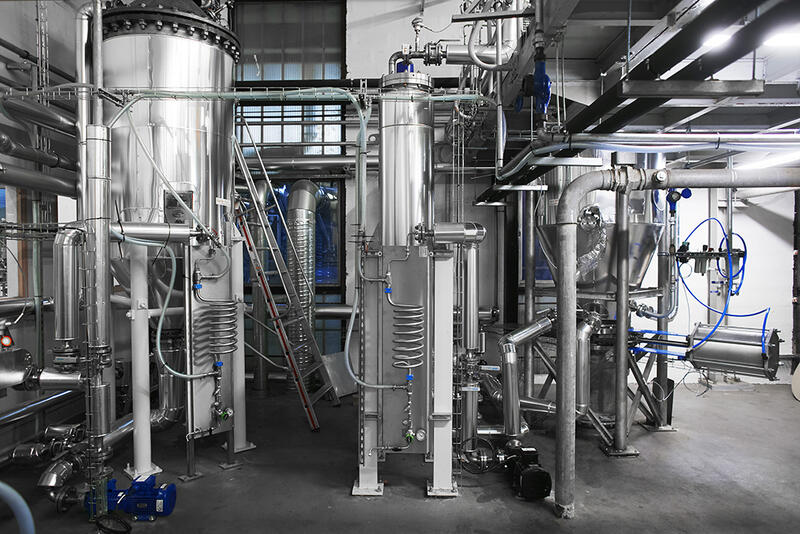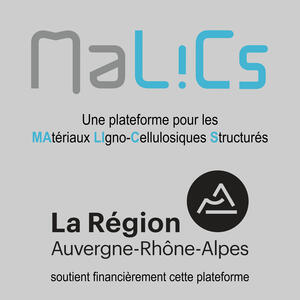
Means
Pilots
Molecules extraction and unbleached chemical pulps producing pilot
Multipurpose valorisation of lignocellulosic raw materials
- To extract molecules present in lignocellulosic raw materials
- To simulate reproducibly and reliably all chemical pulping processes under alkaline, acid, organic, enzymatic conditions
- To validate laboratory results before considering industrial trials
- To extract molecules or to produce unbleached fibres in sufficient quantity to evaluate their uses (use of batches of 100 to 150 kg of raw material)
The little story of the pilot
Since the 1970s, when the CTP was installed in its premises in Grenoble, the cooking pilot, unique in Europe, has enabled many pulp producers to study their chemical pulping process and to evaluate new lignocellulosic biomasses while analyzing the environmental and economic impact.Given the obsolescence of certain equipment (some of which dated from the 1930s), CTP decided to mo-dernize this pilot in 2018 with the support of the Au-vergne Rhône Alpes Region as part of the MaLics platform project. As a result, a new pilot has been designed and built with a new reactor and periphe-rals to simulate the most recent extraction processes of molecules and fibres.
The use of this equipment, representative of the in-dustry, is a guarantee of success for producers wi-shing to validate new extraction conditions or test other plant varieties. A tool to validate your pro-cesses over a hundred kilograms for a successful industrial transfer.
Characteristics
To simulate in a reproducible and reliable way all the processes of extraction of molecules and chemical pulping
- Température : 25 to 180°C
- Liquor / wood ratio >2
- Pressure
- Raw materials: softwoods, hardwoods, annual plants...
- Extraction of molecules (lignins, hemicelluloses, extractives...) with any type of chemicals: acids, bases, organic chemicals, enzymes…
- Chemical pulping processes: Kraft, NaOH, NSSC, Lo Solids, Sulphite, Deep Eutectic Solvents (DES), Compact cooking or other unconventional process
- The reactors used at laboratory or pilot scales were designed with 904 L stainless steel to consi-der implementing the latest trends in extraction in acidic or basic medium.
Laboratory scale : 20g to a few kilograms
- A 3.5 L autoclave with the addition of live steam to steam the chips
- Autoclaves of different sizes 100 ml to 3.5L
- Oil bath reactors accommodating 4, 6 and up to 12 autoclaves, with recirculation of the liquor by rotation of the reactor
- A 20 L disintegrator
- 50 µm mesh diffusers to recover extraction liquors, black liquors and also used for washing pulp
- Two pulp screeners to remove knots and shives before bleaching.
Pilot scale : 100-150 kg of raw material
- Two reactors of 1.5 m3 and 1.3 m3 (linked together) equipped with heat exchangers for heating & addition of live steam (chips steaming)
- Computer system:
- Cooking programming
- Temperature regulation inside and outside the reactor (recirculation from the top and bottom of the cooking reactor).
- A 1 m3 tank to prepare the white liquor
- Two 1 m3 tanks for liquor recovery
- A blowing hopper
- A continuous low concentration pulper with a ca-pacity of approximately 1 m3
- A CH3 pressurized screener fitted with 0.100, 0.200 or 0.350 µm wide slots screens
- A double wire pulp press for producing rolls of wet pulp or the possibility of drying the pulp.
 |
|
Facility acquired in the frame of the MaLics platform with the support of Auvergne Rhône-Alpes Region |
 |
Also to be seen
Consultancy Diagnosis
Centre of Excellence
Testing Laboratory
Platforms